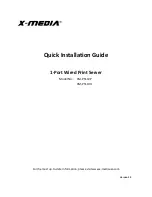
•
Reset the
bootdef_dev
console environment variable to provide
multiple boot paths (Section 6.6.6).
•
Add additional systems to the cluster Section 6.6.7).
If you are installing the Tru64 UNIX operating system or TruCluster Server
software, follow the procedure in Chapter 1.
6.6.1 Before You Install
The following sections cover the preliminary steps that must be completed
before you install Tru64 UNIX and TruCluster Server on Fibre Channel
disks.
6.6.1.1 Configure the HSG80 Storagesets
After the hardware has been installed and configured, storagesets must be
configured for software installation. The following disks/disk partitions are
needed for base operating system and cluster installation:
•
Tru64 UNIX disk
•
Cluster root (
/
)
•
Cluster
/usr
•
Cluster
/var
•
Member boot disk (one for each cluster member system)
•
Quorum disk (if used)
If you are installing only the operating system, you need only the Tru64
UNIX disk (and any disks needed for applications). This document assumes
that both the base operating system and cluster software are to be installed
on Fibre Channel disks.
If you are installing a cluster, you need one or more disks to hold the Tru64
UNIX operating system. The disk(s) are either private disk(s) on the system
that will become the first cluster member, or disk(s) on a shared bus that the
system can access. Whether the Tru64 UNIX disk is on a private disk or a
shared disk, shut down the cluster before booting a cluster member system
standalone from the Tru64 UNIX disk.
An example configuration will show the procedure necessary to set up disks
for base operating system and cluster installation. Modify the procedure
according to your own disk needs. You can use any supported RAID level.
The example will be based on the use of four 4-GB disks used to create
two mirrorsets (RAID level 1) to provide reliability. The mirrorsets will be
partitioned to provide partitions of appropriate sizes. Disks 30200, 30300,
40000, and 40100 will be used for the mirrorsets.
6–36 Using Fibre Channel Storage
















































